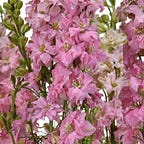The Sonnet
A sonnet is a contemporary type of European poem created by Jacopo in the 13th century that contains fourteen lines. These lines typically any of a number of formal rhyme schemes. For example, in English sonnets, there are usually around 10 syllables per line. The rhyme scheme is typically broken down into sections (5 lines, 4 lines, 5 lines). It can also follow this rhyme scheme: abab, abab, cddcb. These poems are usually very hard for someone with no literary or historical background to write, as the poem itself can go in many different directions and have many different meanings. A sonnet is also a form of literature that is timeless and universal. According to An Exaltation of Forms, “the sonnet has perhaps the most polyglot and varied history of any European poetic form.” (Hacker, 298). In other words, while it can be translated into any language, the sonnet still universally maintains it’s form. These poems could be historical or about desire and love, but they usually involve topics about the human connection and modernism.
One of the most famous sonnet writers is William Shakespeare. In his sonnet Sonnet 73, he uses components of nature and desire to symbolize death. For instance, in lines 9 to 14, he states “In me thou seest the glowing of such fire that on the ashes of his youth doth lie, …. This thou preceiv’st which makes thy love more strong, to love that well which thou must leave ere long” (Shakespeare, 303). He uses fire and ashes to show how his time on earth is burning out and he mentions his desire and love for how his life turned out to represent his last thoughts on his deathbed. This shows how these components and themes are used to help create a perfect sonnet.
Hacker. “The Sonnet.” An Exaltation of Forms: Contemporary Poets Celebrate the Diversity of Their Art. Edited by Annie Finch and Kathrine Varnes. U of Michigan P, 2002, pp. 298.
Shakespeare, William. “Sonnet 73.” An Exaltation of Forms: Contemporary Poets Celebrate the Diversity of Their Art. Edited by Annie Finch and Kathrine Varnes. U of Michigan P, 2002, pp. 303.
